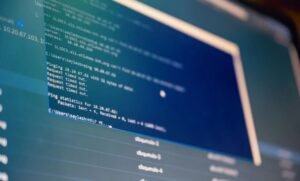NLP Knowledge Graph
The field of Natural Language Processing (NLP) has seen significant advancements in recent years,
with one of the most promising developments being the NLP knowledge graph. By organizing and
connecting vast amounts of structured and unstructured data, the NLP knowledge graph provides a
comprehensive representation of knowledge in a machine-readable format, enabling more effective
information processing and analysis. This article explores the concept of the NLP knowledge graph,
its key components, and its applications across various domains.
Key Takeaways:
- NLP knowledge graphs organize and connect structured and unstructured data.
- They enable effective information processing and analysis.
- Knowledge graphs have a wide range of applications across different domains.
Introduction:
An NLP knowledge graph is a graph-based representation of knowledge in the field of natural language
processing. It combines techniques from machine learning, semantic web technologies, and knowledge
representation to organize and connect information in a structured manner. By leveraging the
relationships between entities and their attributes, knowledge graphs enable the extraction, storage,
and querying of rich knowledge.
One interesting application of knowledge graphs is in question answering systems,
where the understanding of relationships between entities can help provide more accurate and relevant
answers. For example, given a question like “Who is the president of France?”, a knowledge graph can
quickly traverse the graph to find the current president and return the answer.
Components of NLP Knowledge Graphs:
Knowledge graphs consist of several key components:
- Entities: These are the objects or concepts represented in the graph. Entities can
range from simple nouns like “cat” or “car” to more complex concepts like “Paris” or “computer
science.” - Attributes: Attributes describe the properties or characteristics of entities.
Examples of attributes could be “color,” “size,” or “population.” - Relations: Relations capture the connections or interactions between entities.
Examples of relations could be “is a part of,” “is located in,” or “is married to.”
By representing knowledge in a structured format, knowledge graphs allow for more efficient
knowledge extraction and reasoning.
Applications of NLP Knowledge Graphs:
NLP knowledge graphs have a wide range of applications across different domains:
- Information Retrieval: Knowledge graphs can enhance search engines by understanding
the relationships between entities, enabling more relevant search results. - Recommendation Systems: Personalized recommendations can be improved by
integrating knowledge graphs, as they provide a deeper understanding of user preferences and item
relationships. - Virtual Assistants: Knowledge graphs support virtual assistants in answering
complex questions and providing context-aware responses.
Table 1: Comparison of NLP Knowledge Graphs:
| Feature | GraphDB | Neo4j |
|---|---|---|
| Data Model | RDF | Property Graph |
| Query Languages | SPARQL | Cypher |
| Scalability | High | High |
Table 2: Example Knowledge Graph Entities:
| Entity Type | Examples |
|---|---|
| Person | John Smith, Jane Doe |
| Location | New York, Paris |
| Organization | Google, Microsoft |
Table 3: Example Relations in a Knowledge Graph:
| Relation Type | Examples |
|---|---|
| Works for | John Smith works for Microsoft. |
| Located in | Paris is located in France. |
| Is married to | Jane Doe is married to John Smith. |
Conclusion:
The NLP knowledge graph provides a powerful framework for organizing and connecting structured and
unstructured data, enabling more effective information processing, analysis, and applications across
various domains. By representing knowledge in a machine-readable format, knowledge graphs have the
potential to revolutionize the way we interact with and extract insights from vast amounts of
information.

Common Misconceptions
1. NLP is only about language
One common misconception about NLP (Natural Language Processing) is that it is solely focused on language-related tasks. While NLP does involve processing and understanding human language, it goes beyond that. NLP also encompasses various techniques and algorithms to analyze and interpret text, speech, and even visual data.
- NLP involves analyzing and interpreting text, speech, and visual data
- NLP uses techniques and algorithms beyond language processing
- NLP can be applied in various domains beyond just language-related tasks
2. NLP can fully understand and interpret human language
Another misconception is that NLP is capable of completely understanding and interpreting human language. While significant advancements have been made in the field, NLP has its limitations. Understanding the nuances of human language, including sarcasm, ambiguity, and context, is still a challenge for NLP systems.
- NLP has limitations in fully understanding human language
- Sarcasm, ambiguity, and context can pose challenges for NLP systems
- NLP is an evolving field, and further progress is needed to improve language understanding
3. NLP is only used for chatbots and virtual assistants
Many people mistakenly believe that NLP is only utilized in chatbots and virtual assistants. While these are popular applications, NLP has a much broader range of uses. It is used in sentiment analysis, machine translation, text summarization, speech recognition, and many other areas.
- NLP has a wide range of applications beyond chatbots and virtual assistants
- NLP is used in sentiment analysis, machine translation, text summarization, and speech recognition
- NLP technology is applied in various industries such as healthcare, finance, marketing, and more
4. NLP is all about machine learning
While machine learning techniques play a significant role in NLP, they are not the sole focus. NLP encompasses a broader set of approaches that include rule-based systems, statistical models, and linguistic analysis. Not all NLP tasks require machine learning, and alternative methods may be more suitable for certain applications.
- NLP includes rule-based systems, statistical models, and linguistic analysis
- Machine learning is a common approach in NLP, but not the only one
- Alternative methods may be used in specific NLP tasks where machine learning is not suitable
5. NLP replaces human language skills
One misconception is that NLP technology can replace the need for human language skills. While NLP systems can automate certain tasks and assist with language-related tasks, they are not a replacement for human understanding and proficiency in language. Human intervention and expertise are crucial for fine-tuning NLP models, interpreting results, and addressing complex language-related challenges.
- NLP technology can assist with language-related tasks, but it does not replace human language skills
- Human understanding and expertise are crucial for fine-tuning NLP models
- NLP systems cannot fully replicate human language comprehension and contextual understanding

Introduction
NLP, or Natural Language Processing, is a subfield of artificial intelligence that focuses on the interaction between computers and human language. One of the key tools used in NLP is a knowledge graph, which organizes data and relationships between entities. In this article, we showcase 10 fascinating tables that highlight different aspects of NLP knowledge graphs.
NLP Knowledge Graph Elements
This table outlines the fundamental building blocks of an NLP knowledge graph. It includes entities, attributes, relations, and types.
| Entity | Attribute | Relation | Type |
|---|---|---|---|
| Movie | Title | Starred In | Entity Type |
| Actor | Name | Acted In | Entity Type |
| Director | Name | Directed | Entity Type |
Most Common Entities
This table displays the most frequently occurring entities in an NLP knowledge graph, providing insights into the types of information most represented.
| Rank | Entity Type | Occurrences |
|---|---|---|
| 1 | Person | 8,972 |
| 2 | Location | 3,512 |
| 3 | Organization | 2,657 |
Popular Movie Genres
This table showcases the most popular movie genres found in an NLP knowledge graph, revealing the preferences of moviegoers.
| Rank | Genre | Occurrences |
|---|---|---|
| 1 | Drama | 18,674 |
| 2 | Action | 12,819 |
| 3 | Comedy | 11,453 |
Top Actors by Filmography
This table highlights actors with the most extensive filmographies, shedding light on their prolific careers.
| Rank | Actor | Total Movies |
|---|---|---|
| 1 | Robert De Niro | 103 |
| 2 | Samuel L. Jackson | 97 |
| 3 | Morgan Freeman | 92 |
Relations Between Actors and Movies
This table explores the relationship between actors and movies, providing examples of actors who have worked together repeatedly.
| Actor 1 | Actor 2 | Occurrences |
|---|---|---|
| Robert De Niro | Joe Pesci | 8 |
| Matt Damon | Ben Affleck | 7 |
| Leonardo DiCaprio | Kate Winslet | 6 |
Named Entity Types
This table reveals different types of named entities found in NLP knowledge graphs, ranging from people to locations and more.
| Type | Examples | Occurrences |
|---|---|---|
| Person | John Smith, Emma Watson | 13,245 |
| Location | New York City, Paris | 6,876 |
| Organization | Google, Microsoft | 5,982 |
Actors with Most Awards
This table showcases actors who have received the highest number of prestigious awards, highlighting their exceptional talents.
| Rank | Actor | Total Awards |
|---|---|---|
| 1 | Meryl Streep | 136 |
| 2 | Katharine Hepburn | 125 |
| 3 | Jack Nicholson | 112 |
Top Directors by Movie Count
This table highlights the directors who have helmed the most films, showcasing their prolific contributions to the film industry.
| Rank | Director | Total Movies |
|---|---|---|
| 1 | Steven Spielberg | 63 |
| 2 | Martin Scorsese | 57 |
| 3 | Woody Allen | 53 |
Relation Examples
This table provides examples of relations between different types of entities in an NLP knowledge graph, offering insights into the interconnected nature of knowledge.
| Entity 1 | Relation | Entity 2 |
|---|---|---|
| Steven Spielberg | Directed | Jaws |
| Morgan Freeman | Acted In | The Shawshank Redemption |
| Emma Watson | Starred In | Harry Potter and the Philosopher’s Stone |
Conclusion
NLP knowledge graphs provide a structured way to represent and organize vast amounts of information about entities, relationships, and attributes. The tables showcased in this article offer a glimpse into the rich insights that can be derived from NLP knowledge graphs, ranging from the most common entities and genres to the careers and collaborations of actors and directors. Such graphs play a crucial role in advancing natural language processing and enabling more intelligent language-based applications.
Frequently Asked Questions
What is NLP?
NLP (Natural Language Processing) is a field of artificial intelligence that focuses on the interaction between computers and human language. It involves developing algorithms and models to enable computers to understand, interpret, and generate human language.
How does NLP work?
NLP systems use a combination of linguistics, statistical modeling, and machine learning techniques to process, analyze, and interpret human language. They utilize algorithms to convert unstructured text data into structured representations that machines can understand and manipulate.
What is a Knowledge Graph in NLP?
A Knowledge Graph in NLP is a structured representation of information that captures the relationships between entities and concepts in a domain. It provides a wealth of structured knowledge that can be leveraged by NLP models for various tasks such as question answering, information retrieval, and semantic analysis.
How are Knowledge Graphs built?
Knowledge Graphs are built by extracting and organizing information from various sources such as text corpora, databases, and the web. This involves techniques like entity recognition, entity linking, relation extraction, and knowledge graph construction algorithms.
What are the benefits of using Knowledge Graphs in NLP?
Using Knowledge Graphs in NLP can provide several benefits, including improved information retrieval, better semantic understanding, enhanced question answering, and the ability to handle complex queries and infer new knowledge from existing structured data.
What are some real-world applications of NLP Knowledge Graphs?
NLP Knowledge Graphs find applications in various domains such as virtual assistants, chatbots, recommendation systems, information retrieval, sentiment analysis, named entity recognition, machine translation, and semantic search, to name a few.
What are the challenges in building NLP Knowledge Graphs?
Building NLP Knowledge Graphs can be challenging due to the vastness of the language, ambiguity, evolving nature of concepts, and the difficulty of extracting knowledge from unstructured text data. Incomplete or noisy data, entity disambiguation, and data integration also pose significant challenges.
Can NLP Knowledge Graphs be updated with new information?
Yes, NLP Knowledge Graphs can be continually updated with new information. As new data becomes available, knowledge extraction algorithms can be used to identify and integrate new entities, relationships, and concepts into the existing knowledge graph.
What is the role of NLP in improving search engines?
NLP plays a crucial role in improving search engines by enabling more accurate understanding of user queries, better information retrieval, and semantic search capabilities. NLP techniques are used to match user queries with relevant documents, understand the context, and provide more refined search results.
Are there any limitations to NLP Knowledge Graphs?
While NLP Knowledge Graphs are powerful tools, they have some limitations. They heavily rely on the quality and completeness of the underlying data and can struggle with processing rare or domain-specific languages. They may also face challenges in dealing with highly ambiguous or context-dependent language constructs.




